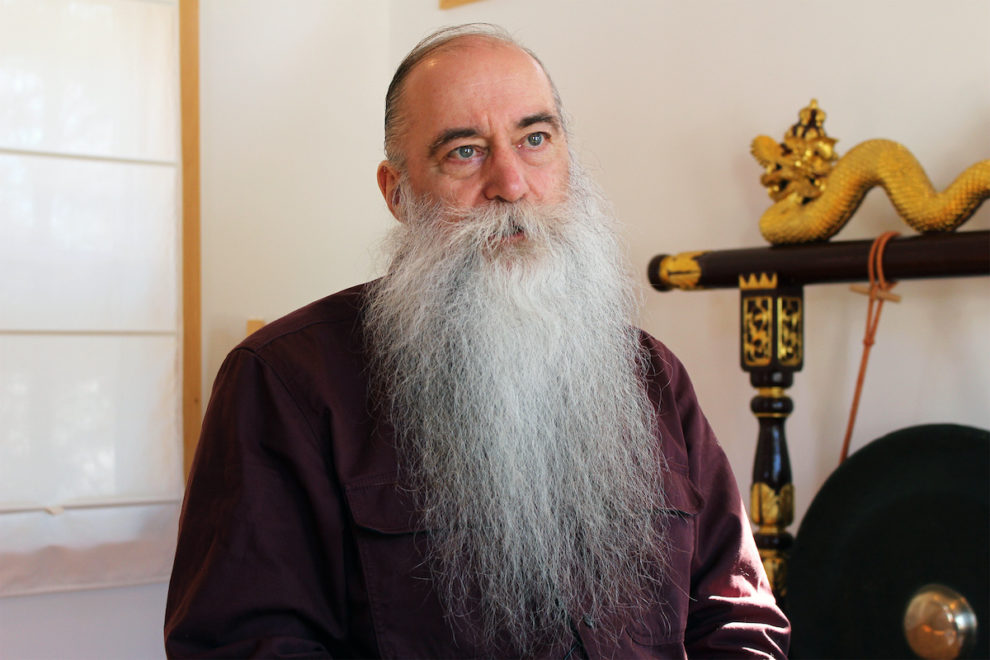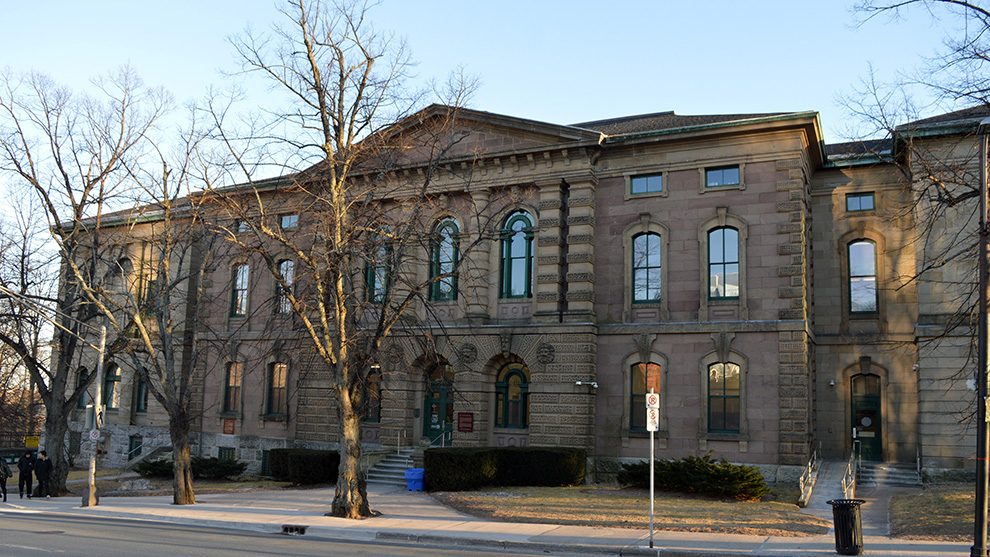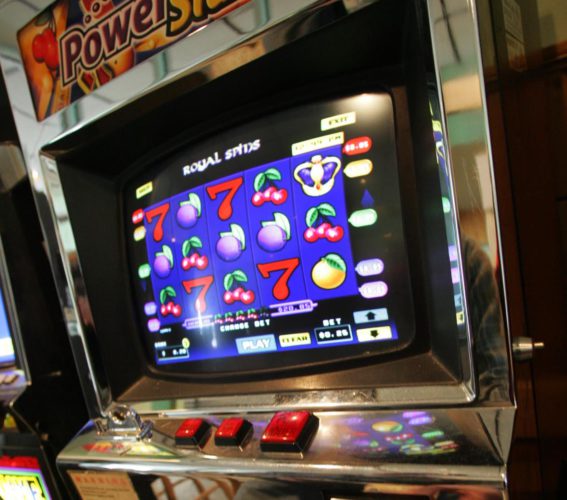Near misses and big losses: VLTs still hook players and reel in millions

caption
Stephen TownsendOne in 10 Nova Scotia players in the most serious problem gambling category
When Stephen Townsend of Dartmouth retired in late 2017 after almost four decades as a cameraperson at a local TV station, he should have been set for life.
But an insidious addiction had eaten away much of his life savings.
Spin by spin, he was drawn in by video lottery terminals, gambling machines long known to be addictive, and installed and overseen by his provincial government.
“There have been times where I’ve come back and I’ve lost quite a bit of money and I’ve basically zoned out for about two or three days, like just mentally incapacitated because you just can’t believe that …you’ve come that low.”
Despite years of investing, he ended up with only the Canada Pension Plan and Old Age Security to support him.
“I’ve never joined a pension plan. I had my own investments, and they’re gone,” Townsend said. “I had two investment properties that I was getting three rents (from). Those are gone. So, for the rest of my life, that income is gone. Plus all the trips I could’ve (taken)….”
Townsend figures he has lost at least half a million dollars on VLTs in three decades of playing, and with the income he might have earned, he estimates he could be out $1 million in what would have been his retirement nest egg. He is working to rebuild his savings now.
“Before I got addicted to these machines, they used to call me the Bank of Townsend at work; I always had money and I never understood why my friends at work would run out……And then I got this addiction, and it’s destroyed me. Not just me. Thousands of other people”

caption
Stephen Townsend lost his life savings to VLTsStories like Townsend’s emerged soon after VLTs were introduced to Nova Scotia in 1991: people driven to ruin, financial crime and suicide. But governments of successive political stripes have been unwilling to let go of the machines and the money they bring in.
In 2010, King’s journalism students investigated the damage to people’s lives caused by the machines nicknamed the “crack cocaine of gambling.” Now, a new King’s student investigation has found that more than a decade later, the province’s VLT business is remarkably healthy, even if many players are not. The average VLT player in Nova Scotia put $11,000 into the machines and lost $2,400 in 2019-20, the year before COVID lockdowns shut down VLT locations for weeks on end. Many spent and lost far more than that.
Those losses put tens of millions of dollars into the hands of the Nova Scotia government and the businesses that host the machines. At the same time, figures from the Nova Scotia Gaming Corporation, which oversees gambling outside of First Nations, show about half of VLT players are at some level of gambling risk, and one in 10 are in the most severe category of the Problem Gambling Severity Index. That’s more than 10 times the rate for gamblers as a whole in Nova Scotia.
The gaming corporation argues that while the machines do harm some players, it’s better to have the government running them than someone else.
“There’s many aspects to the entertainment industry, many aspects to the gambling industry,” said Bob MacKinnon, the corporation’s president, in an interview. “So VLTs are part of that and we believe it’s important for that which is in place to be regulated and as responsible as possible.”
But Peter McKenna, a University of Prince Edward Island political science professor who wrote a book about VLTs in Atlantic Canada and remains an ardent critic, said the gambling machines are not a form of entertainment. Instead, he argues, they represent a government that willfully hurts its citizens for easy money.
“There’s no other gambling like VLTs, no matter what anyone says, argues or suggests,” he said “There’s nothing that’s as addictive; there’s nothing as dangerous.”
He wants them banned.
Crack cocaine of gambling
VLTs got the nickname “the crack cocaine of gambling” because of how easily people can become hooked. Bruce Dienes, chair of the group Gambling Risk Informed Nova Scotia, said they are designed to be manipulative, and people are not warned of this before they play.
Dienes has a doctorate in psychology and is a part time faculty member at Mount Saint Vincent University. He said VLTs are programmed to show more apparent near wins than would be likely statistically.
“And if you think about human evolution, if you’re out on the Serengeti and you’re going hunting, and you’re throwing your spear and you just miss by a quarter inch, that’s really useful information because the next time you get to feed your family, because you can make corrections.
“So what will happen (with VLTs) is that you know that things will spin and ‘Oh, it almost won!’ So that’s… just an intentional manipulation of our instinctive attention to near misses and making us more likely to continue to play.”

caption
Bruce Dienes of Gambling Risk Informed Nova Scotia.Extensive research, including a recent large Canadian study, has shown the link between the machines and problem gambling.
Elizabeth Stephen sees the effects in her counselling practice.
“Despite the proliferation of other types of gambling, the majority of people I see and the majority of people who call the (provincial) support network helpline, are still machine gamblers,” she said in a 2020 interview. She’s recently seen more clients who gamble online as video lottery locations were shut down during the pandemic.
Stephen is a gambling addictions specialist who previously worked for the Nova Scotia Health Authority, and who is now in part-time private practice.
“I have not yet had a VLT machine gambler be able to manage their gambling. They’ve had to stop.”
She likens the government running VLTs to the NSLC selling cocaine, and said many of her clients are devastated.
“I often see people when things are really bad, so they’re already bankrupt; sometimes they’ve already lost a job. Sometimes they have committed a crime and they’re now facing charges…and some of my clients have gone to jail.”

caption
Halifax Provincial Court. Some of Elizabeth Stephen’s gambling clients have faced criminal charges.We spoke to one of Elizabeth Stephen’s clients, who asked that her name not be used as she is trying to move on with her life.
Between 2012 and 2015, the HRM-area woman, now in her 60s, stole $80,000 from her employer to feed into VLTs.
“When I look back now and I think about it, and I think, ‘Oh, my heavens, I actually did that, I could just shake my head” she said. “But then, it’s an addiction…people lose their houses over those machines.”
She said she feels deep shame for what she did and said gambling on VLTs became central to her life.
“I was even getting up at five o’clock in the morning and going to gamble before I went to work,” she remembered. “And I couldn’t wait to get out of work at night, and I wouldn’t even go home first.”
She kept gambling to try to win back her losses, something she realizes now is impossible.
“You were always robbing Peter to pay Paul…It was just awful, awful, awful, trying to do the books and knowing that money wasn’t there.”
The woman handled rent and other payments for a local company. She started taking some of this money to sustain her addiction, and if she lost, she would take more.
Eventually, she realized she would need to face up to the consequences, and said she headed for the police station, only to drive by and contact a lawyer instead. He told her to wait, and later she started counselling with Elizabeth Stephen. According to facts agreed to in provincial court, she went to the police with her lawyer and gave a statement admitting what she had done.
She pleaded guilty to fraud greater than $5,000.
Her former employer wanted a tough sentence and while the judge agreed it was a serious crime, he opted not to put her behind bars. One reason for that was her gambling disorder. He gave her a two-year conditional sentence to be served in the community, with 14 months of house arrest and another 10 months with a curfew, to be followed by three years on probation.
Harm apparent early
VLTs were first introduced in 1991 by the Progressive Conservative government of Donald Cameron, which said legalized, government-regulated VLTs were preferable to the estimated 4,000 “grey market” machines operating at the time. The new, government- sponsored machines were placed in locations such as convenience stores and laundromats, as well as in liquor-licensed establishments.
Within two years they were removed from the non-licensed premises as evidence of problems mounted.
As the years went on, alarm only increased.

caption
An earlier generation of VLT.At the beginning of the 2000s, the machines were modified to add a clock showing the time of day, the amount in the “bank” was changed to display in dollars, pop up reminders of continued play were added, and the player is forced to cash out every two and a half hours. These features were supposed to help players avoid running into harm.
In 2005, the Conservative government of John Hamm, which had been reduced to a minority two years before, introduced the province’s first ever gaming strategy. It included further measures that were supposed to limit the damage from VLTs.
The “stop” button was eliminated. It had allowed a player to cut straight to the outcome of a “spin.” Getting rid of the button meant players had to wait a few seconds before betting again and there was no longer an illusion of having some control over the outcome. The changes also lengthened the average length of a “spin” from 2.96 seconds to 3.84 seconds, so players had to wait about an extra second.
The gaming corporation, and the Atlantic Lottery Corporation, which runs the VLT network, continue to point to those long-ago changes as evidence of Nova Scotia’s leadership in protecting gamblers. But none of the changes did anything to fundamentally change the way VLTs work: whether a player wins or loses is decided by random numbers the instant the player presses the play button. To this day, the machines create the illusion of near misses, and people still get hooked. Proposed research to investigate eliminating near misses was never pursued, the gaming corporation said.
John Hamm’s gaming strategy, inherited by the successor government of Conservative Rodney MacDonald, also cut the number of VLTs in for-profit businesses by 1,000, initially by 800, and later by another 200 through attrition as businesses with VLTs voluntarily gave up the machines or closed altogether.
By 2010, when King’s students first investigated VLTs, 2,233 machines were operating and net revenues after prizes had fallen to $145 million from the 2005 peak of $200 million.
Then in 2011, the NDP government unveiled its own Responsible Gaming Strategy. It was a much shorter and less detailed document than Hamm’s, with a tone far more sympathetic to gambling.
The new strategy noted the importance of VLTs to the businesses that housed them and said that VLTs and their players had been stigmatized. It promised to reduce the number of machines through attrition, though that process has been slow, and introduced probably the most controversial VLT reform of all.
The NDP announced that a system that issued cards to players to allow them to control their spending, which had been introduced on a voluntary basis in 2010, would be made mandatory in 2012. The system had been under development for several years and was dubbed My-Play.
But even when it was mandatory, there was no requirement to register and keep a card, and players could get new cards whenever they liked, undermining the original goal of letting them track their spending.
My-Play was killed by the Liberals under Stephen McNeil in 2014, who said it didn’t deter problem gamblers, but had discouraged people who gamble recreationally, resulting in a loss of revenues.
After the government scrapped My-Play, revenues from VLTs started trending up again and the Atlantic Lottery Corporation attributed that “primarily” to getting rid of the system. The 2014-15 annual report also said ,”new gaming experiences” provide by newer VLTs were “reinvigorating player appeal in this channel with a more dynamic experience.”
Players of VLTs in the other three Atlantic provinces can use cards or a logon to set up voluntary limits on time played and money spent, but since the demise of My-Play, there hasn’t been a a similar function here.
Big money
While the money going into VLTs, and coming out as profits, is less than it was in the early 2000s before the Hamm gaming strategy, the numbers are still huge. In the 2019-20 fiscal year, VLT players put $569 million into the coin slots and bill acceptors of Nova Scotia VLTs outside of First Nations, according to government figures. The next year, which saw VLT premises closed for long periods due to COVID lockdowns, this was down to $429 million.
The government records revenues from April 1 to March 31, each year.
Much of the money fed in is returned when players cash out their winnings, just under 80 per cent.
Net revenues after prizes was $123 million in 2019-20 and $91 million in 2020-21. This amount represents the money that players lost.
Briefing materials for a meeting between the Atlantic Lottery Corporation and regional ministers for gaming in 2019 noted that, “Video lottery is and has been Atlantic Lottery’s most profitable line of business.” In fact, only during COVID, when lockdowns closed VLT bars for long periods, was it eclipsed in Nova Scotia by profits from lottery tickets.
We calculated what that spending looks like for the average player, keeping in mind that some players spend far more and some far less than the average. Only six or seven per cent of Nova Scotians ever play the machines, according to research by the gaming corporation. Using a figure of 6.5 per cent, we calculated a per capita figure for the population 19 and over, and it turns out each VLT player deposited, on average, about $11,000 into the machines in 2019-20, and more than $8,000 in 2020-21.
Compare that to the average lottery ticket purchaser, who bought in the range of $600 in tickets, based on the approximate half of the population that buys them. Each VLT player lost $2,400 on average in 2019-20 and $1,750 the next year. Each lottery ticket player lost under $300 both years. That money shows up as net revenue in official figures.
As with all averages, some lose far more money than that, and the biggest losses with VLTs can be enormous.
While critics say VLTs are designed to get people to spend as much as possible, with players sitting in front of machines for hours, MacKinnon attributes the differences between VLTs and lotteries to the manner of play.
“So when somebody goes out to play VLTs, they’re going to a licensed establishment, they’re probably going there for a period of time, and you know, probably part of a night out or an evening out or whatever the case might be, whereas the purpose of a lottery ticket is kind of, you know, pretty much a one and done.”
As for the jump in lottery ticket revenues during in 2020-21, he said the corporation will see if that persists.
Responsible gambling
The Nova Scotia Gaming Corporation has as part of its mandate the promotion of responsible gambling. It uses various resources to help gamblers play within their means, including printed and online materials. It provides annual responsible gambling training to video lottery retailers and casino employees and various campaigns to increase public literacy about gambling.
During his interview for this story, MacKinnon repeatedly returned to the theme.
“It’s extraordinarily important for all players in Nova Scotia, but especially VLT players, do have opportunities to learn about responsible gambling messages from us. That would include that it’s very important to make sure that VLTs are part of your entertainment mix and not a way to make money, that you should set budgets on your time and on your spend,” MacKinnon said.
“We also know that people who are affected by problems with their play, it is really quite a serious matter and we strive to make sure that information and resources are available.” He points to $6 million a year spent on responsible gambling programming and funding for treatment, and additional money spent by the Nova Scotia Health Authority and Health department, and said people running into trouble should reach out to services such as the Gambling Support Network.
But Dienes is critical of approaches that put the emphasis on individual gamblers having problems, rather than on the industry and machines that create the problems. That, he said, discourages people from seeking help, “because it's like, 'Oh, well, I was really stupid; I kept playing even though I was losing. So if I put myself forward, I'm going to look like an idiot and people are going to disrespect me.”
Dienes often discussed the amount of money leaving his home in King's County, when he gives talks on VLTs. VLT net revenues in King's County were almost $7.5 million in 2019. The bulk of this money goes to the province. "What I say to them is gambling revenue is a direct measure of harm. That's money you've taken from your citizens that could be used to build our community.”
As for Stephen Townsend, he said he’s tried several times to quit, but always ended up going back. COVID forced him to take a break, as establishments were shuttered during lockdowns, but when they reopened, he was back.
He went on a cycle of ups and downs. He had a “big win” last August. “Then, of course, I lost it all. Then I got fed up and stopped playing,” Townsend said. “The same thing happened in 2020.”
Lately he’s been back on the machines, and has mostly lost money.
“They used to run radio ads, ‘Life just keeps getting better and better in Nova Scotia because of Atlantic Lottery.’ You know, they just ignore the fact they destroy hundreds, even thousands of people’s lives.”

